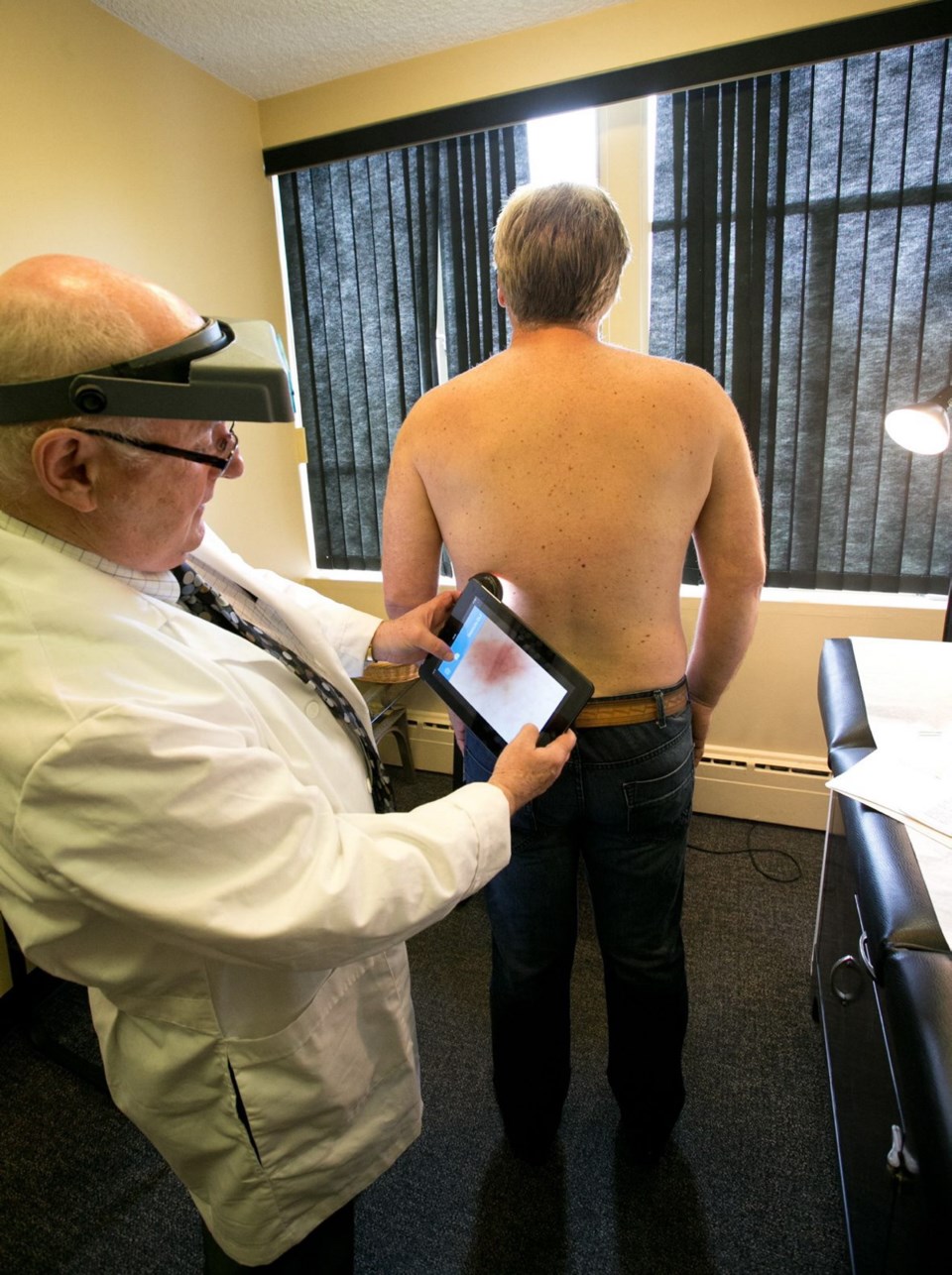B.C. has a critical shortage of dermatologists at a time when cases of skin cancer are increasing and early detection can be key to survival, says the head of B.C.’s dermatologists association.
Dr. Evert Tuyp said the shortage means patients with a suspected skin cancer lesion could be waiting up to six months to see a dermatologist.
“With melanoma increasing in incidence, we have a perfect storm,” said Tuyp, president of the dermatology section of Doctors of B.C., formerly the B.C. Medical Association. “It’s a massive problem,” Tuyp said. “The whole thing doesn’t make sense, that we have this increasing deadly disease and a shortage of dermatologists.”
Melanoma is increasing by about 2.2 per cent each year, said Sandra Krueckl, of the Canadian Cancer Society’s B.C. and Yukon branch.
“The Canadian Cancer Society is concerned about dermatologist shortages in B.C.,” Krueckl said. “With the rising rates of skin cancer in the province, it's very important that all British Columbians get timely access to the cancer care they need — from early screening [to] care and treatment.”
Skin cancer is the most common cancer in Canada. Together, skin cancers account for almost the same number of new cancer cases of the four major cancers — lung, breast, colorectal and prostate — combined.
Melanoma, the deadliest skin cancer, has become one of the fastest-growing forms of cancer, after thyroid cancer, according to a 2014 report by the Canadian Cancer Society.
It is estimated that 82,600 Canadians had skin cancer diagnosed last year, and about 6,500 cases of those cases are likely melanoma and the rest less lethal, non-melanoma skin cancers including basal and squamous cell, according to the report. Exact numbers are due to be released this month.
Caught in late stages, hard-to-diagnose skin cancers can be deadly and costly to fight. Caught early, they may cause scars and disfigurement when removed, but they can have a high cure rate.
Dermatologists are the most highly trained physicians in diagnosing skin cancer, Tuyp said.
B.C. has about 65 dermatologists, including 11 on Vancouver Island.
Christine Janus, executive director of the Canadian Skin Patient Alliance, presented a 10,000-signature petition to the Health Ministry and Doctors of B.C., in February, calling attention to the shortage.
“Dermatologists are the skin experts and they get it right most of the time and have the equipment and expertise,” she said.
Dr. Bill Cavers, a Victoria family doctor who is president of the Doctors of B.C., said it can take up to six months for a patient to get an appointment with a Victoria dermatologist. The shortage is a concern. “We are doing what we can. We know there is a wait list.”
Tuyp cited several reasons behind poor recruitment and retention rates of dermatologists. For example, B.C. has the lowest consultation fees for dermatologists in Canada. Also, many B.C. dermatologists are near or beyond retirement age — the average age is 58, according to a Canadian Medical Association report.
The University of B.C. graduates just three dermatologists each year. There are 26 postings for dermatologists to work in the public system, said John Mabbott, executive director of Health Match B.C., a non-profit program that recruits doctors and nurses to B.C.
“That’s a significant number that have not yet been filled,” Mabbott said, noting that it is equivalent to about 40 per cent of the current B.C. roster of dermatologists.
Of these vacancies, almost all require full licensure under the Royal College of Physicians and Surgeons of Canada, Mabbott added.
“That significantly reduces our ability to attract dermatologists from the United Kingdom, United States or Australia because they are not eligible,” he said.
Nevertheless, Mabbott will go to the World Dermatology Conference in Vancouver in June to lobby dermatologists to practise in B.C. “We are making every effort to find a dermatologist,” he said.
Exacerbating the recruitment challenge is the lure of far more lucrative opportunities in the private sector for dermatologists and psychiatrists, both of which are in short supply in B.C., Mabbott said.
Cities such as Prince George and Vernon and rural areas such as the Gulf Islands have no dermatologists. There is just one dermatologist serving Kelowna and one in Penticton.



